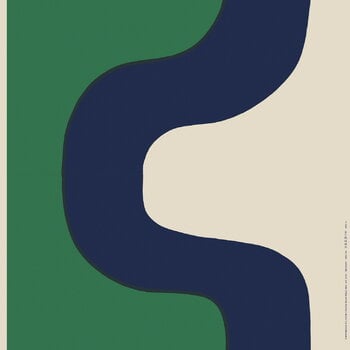Marimekko’s Seireeni fabric is adorned with the beguiling Seireeni pattern, designed by Maija Isola in the 1960s. Drawing inspiration from the gentle movement of the warm, crystal-clear waters of the Aegean Sea, the attractive pattern also echoes the mystical songs of the sirens (seireeni in Finnish) described in Greek mythology.
Printed in Helsinki, Finland, the fabric is made of partly recycled cotton and linen and coloured in hues of dark blue, green and linen. The Seireeni cotton-linen fabric is perfect for sewing a custom tablecloth or curtains, for example.




